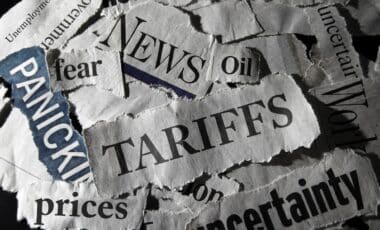The United States saw a modest uptick in consumer prices in June, marking the first increase in core inflation in five months. Businesses are beginning to pass on higher costs from import tariffs, contributing to the shift.
The data points to a gradual reawakening of inflationary pressures, even as the broader economy shows signs of strain. With retail sales weakening and the labor market cooling, the balance between growth and price stability is entering a new phase.
Inflation Ticks up as Import Costs Feed Through Consumer Prices
Core inflation, which excludes the more volatile categories of food and energy, rose by 0.3% in June, according to the Consumer Price Index (CPI) data cited by Bloomberg. This marks the largest monthly gain since January, and follows a softer 0.1% rise in May.
As tariffs on foreign goods continue to affect supply chains, categories such as appliances and furniture have shown marked price increases. Web-scraped data analyzed by Bloomberg indicated firmness in these segments, while others—like used vehicles and airfares—continued to weaken.
According to economists including Estelle Ou, Stuart Paul, and Eliza Winger, the pickup suggests a moderate pass-through of tariff-related costs, though the broader services sector remains subdued. The annualized core inflation rate now stands at 2.9%, its first acceleration since the beginning of the year.
Fed Stays on Alert as Retail Sales Show Weak Momentum
The Federal Reserve is closely monitoring the inflation trajectory as it prepares for its next monetary policy meeting scheduled for July 29–30. While inflation pressures appear to be stabilizing, consumer demand remains under scrutiny.
According to projections for Thursday’s data release, retail sales are expected to show only marginal growth in June, following two consecutive months of decline. This trend adds to concerns about the strength of household spending, a key pillar of the US economy.
Fed officials have so far resisted calls to lower interest rates, citing ongoing risks tied to trade policy and tariff impacts. Chris G. Collins, an economist at Bloomberg, noted that the mixed signals from the inflation and spending data make it difficult for the Fed to shift its stance decisively.
Global inflation trends are intensifying in key economies such as Canada, China, and the United Kingdom, prompting central banks to reassess their strategies in response to ripple effects from US trade policy.
The White House’s latest round of reciprocal tariffs, set to take effect on August 1, is expected to add another layer of complexity to inflation management and international trade relations.









